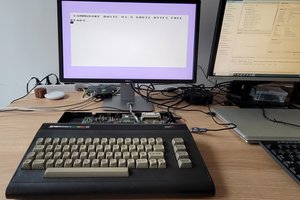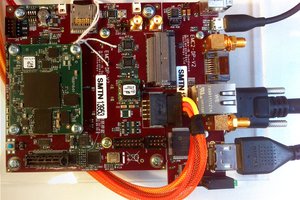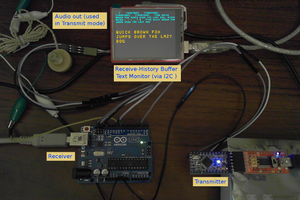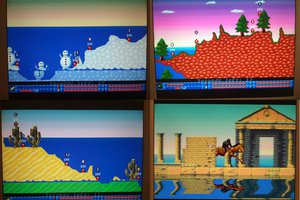Demo Video
Hardware Schematic Diagram
The hardware design is only available as the circuit’s schematic diagram only, and you are free to design your own PCB (printed circuit board) for the circuit assembly. The schematic diagram and the bill of materials can be obtained here: https://deepstomp.deeptronic.com/deepstomps-hardware-manual/
Platform Source Code and The Development Tool Download
This complete platform has been published in a public repository, and can be downloaded at https://github.com/hamuro80/deepstomp. The software package is a complete project files of SW4STM32 (System Workbench for STM32) development tool. This development tool is free, and can be obtained (with free registration) here. To load the compiled firmware to the Deepstomp stompbox, you need to use serial bootloader that can be obtained from STMicroelectronic here (with free registration).
LICENSE
- Each source code files in the software package has its own license in its copyright notice at the top of the source code, which we believe that they has the most flexible open-source licensing, that allow everyone to use them for their proprietary commercial product, not limiting only for open-source products. Please let me know if there's any file in this distrbution that has a limiting license that prevent anyone to use it in non open-source project/product by contacting me at my email: hamuro at vidisonic dot com.
- The Deepstomp's hardware design (Deepstomp's main board circuit) can be used in any commercial or open-source product, with or without modification. Everyone is allowed to produce Deepstomp hardware under their own brand or trademark.
HARDWARE FEATURES
- Pluggable Blue-Pill-Compatible CPU/Core board: ARM Cortex M3, 72MHz clock speed, 20 kB RAM, 64KB flash eprom
- mono input and output
- 44.1 kHz sampling rate
- 16-bit output using cascaded double 8-bit PWM with auto-calibration
- 15-bit input using multi-channel expansion oversampling
- 10 LEDs for parameter value/signal indicator display
- 6 LEDs for control/parameter selection indicator
- Input level knob to ensure optimum input conversion
- Output level knob to balance the processed output and the bypassed signal
- Rotary encoder with click-push button to access all operation menus
HARDWARE FUTURE WORKS
- Adding output buffer after level control for better output noise-resistance
SOFTWARE FEATURES
- True real-time, buffered only 1 sample (1/44100 seconds) for precessing while doing input and output conversion
- Support guitar (or general musical instrument) tuner with +-(1/12) semitone precision (+- 0.45% frequency deviation)
- Support single-effect mode with 6 controllable parameters
- Support multi-effect mode (max 10 effect modules)
- Support 19 custom programmable presets which can be reset to default (factory setting) independently for each preset
- Support 10-steps, 19-steps, and 38-steps parameters control.
- Easy-to-use modular framework with object-oriented-like C programming style with fully managed user interface, so you can focus on the signal processing algorithm
- Using free IDE: System Workbench for STM32 (SW4STM32)
CURRENTLY IMPLEMENTED CORE FUNCTION
- Audio input-output
- Guitar (or general musical instrument) tuner
- Parameter control and preset management for single- and multi-effect modes
- Automatic calibration for 16-bit PWM output
- Calibration operation mode for calibrating the ADC expansion circuitry
- Serial debugging display to monitor some internal parameters and signal probes
IMPLEMENTED EFFECT MODULES
- Expansor, an integrated noise gate expander and compressor with syncronized gate-on level, gate-off level, compression-start, compression-stop, and compression factor, compression attack, and compression-release controls.
- Distortion, featured with overdrive mode, fuzz mode, and hi-lo tone control
- Delay, featured with time, feedback, and balance control
SOFTWARE FUTURE WORKS
- Implement multi-modal mode
- Adding on/off toggle interface for module management for better memory management...
 Hasan Murod
Hasan Murod
 István Hegedűs
István Hegedűs
 Sundance Multiprocessor
Sundance Multiprocessor

 Nicola Wrachien
Nicola Wrachien